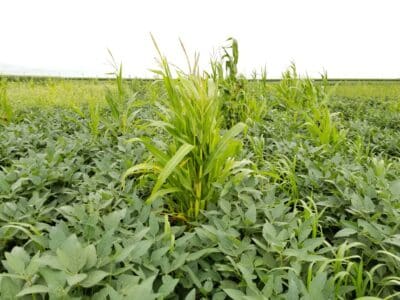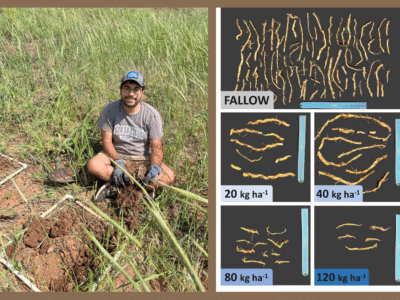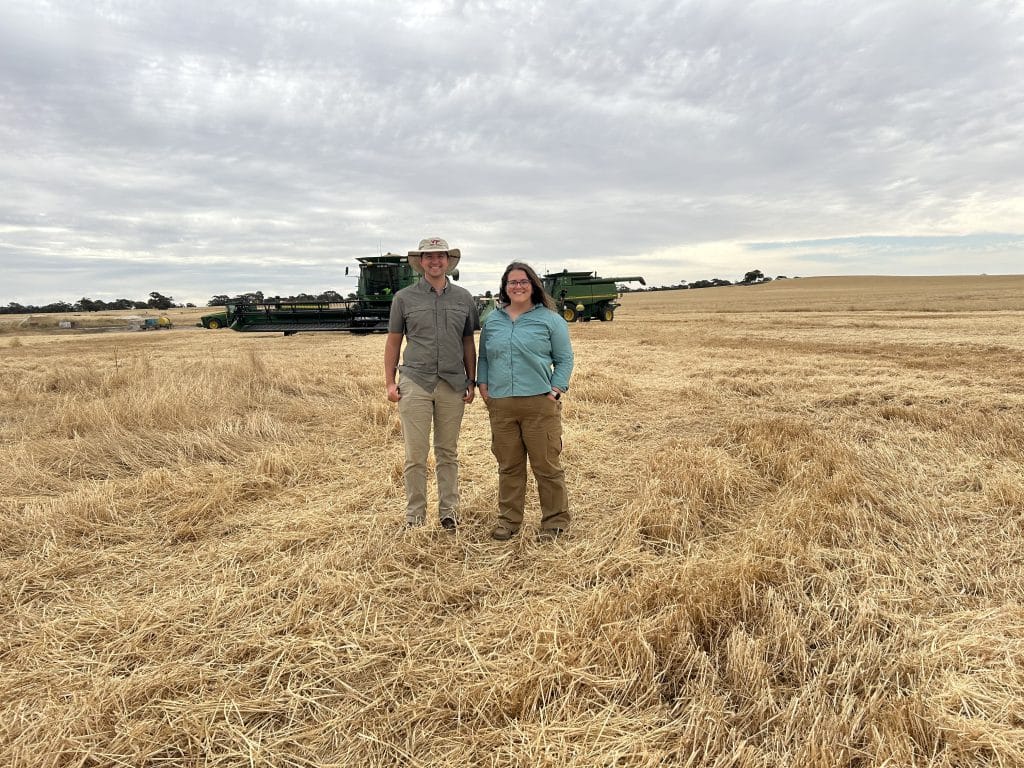
I recently returned from a trip to Western Australia to meet with weed scientist Dr. Michael Walsh, along with fellow GROW team member, Sarah Chu. During our stay, we were able to participate in some of the research that Dr. Walsh is conducting at the University of Western Australia (UWA) on harvest weed seed control (HWSC), a topic he has investigated for decades. Dr. Walsh’s work has prompted similar research to be conducted in the U.S., including our current Ph.D. research. In line with this, Dr. Walsh invited us to Perth, where UWA is located, to participate in and explore new HWSC research there.
We had the opportunity to visit right in the middle of wheat harvest. With the Wheatbelt just a few hours from Perth, we had many opportunities to experience a genuine Australian wheat harvest.
Blue Light & Heat: Testing the Directed Energy Unit
During our stay in Perth, we were able to participate in two ongoing research projects. The first was testing the efficacy of the Directed Energy Unit, which uses blue light and heat to kill weed seeds present in chaff material. The goal is to test different temperatures and various exposure times. With the help of Dr. John Broster from Charles Sturt University, we successfully tested 22 treatments to determine the best temperature and exposure time for killing rigid ryegrass seeds. We also assisted Dr. Walsh with the germination counts for the seed lots exposed to these treatments, which showed promising ryegrass seed-kill levels of over 90% for some treatments.


Eli Russell, Sarah Chu and Dr. Walsh testing the Directed Energy Unit at UWA in Perth, Australia (left) and then counting viable seeds after the testing (right). (Photo credit: Eli Russell, Virginia Tech)
Stripper Headers and HWSC Research
The rest of the time was spent testing the ability of stripper headers to collect weed seed during small grains harvest. Stripper headers (like the ones produced by Shelbourne Reynolds) are becoming more popular in the Australian Wheatbelt. They allow farmers to harvest only the heads of the wheat, leaving the rest of the stubble in the field. This is very beneficial, because farmers can reduce the amount of material processed by the combine, resulting in less fuel use and an overall faster harvest.
However, there is a catch with stripper headers/fronts. Do they actually capture the weed seeds that are in the field? That is what Dr. Walsh is trying to answer!
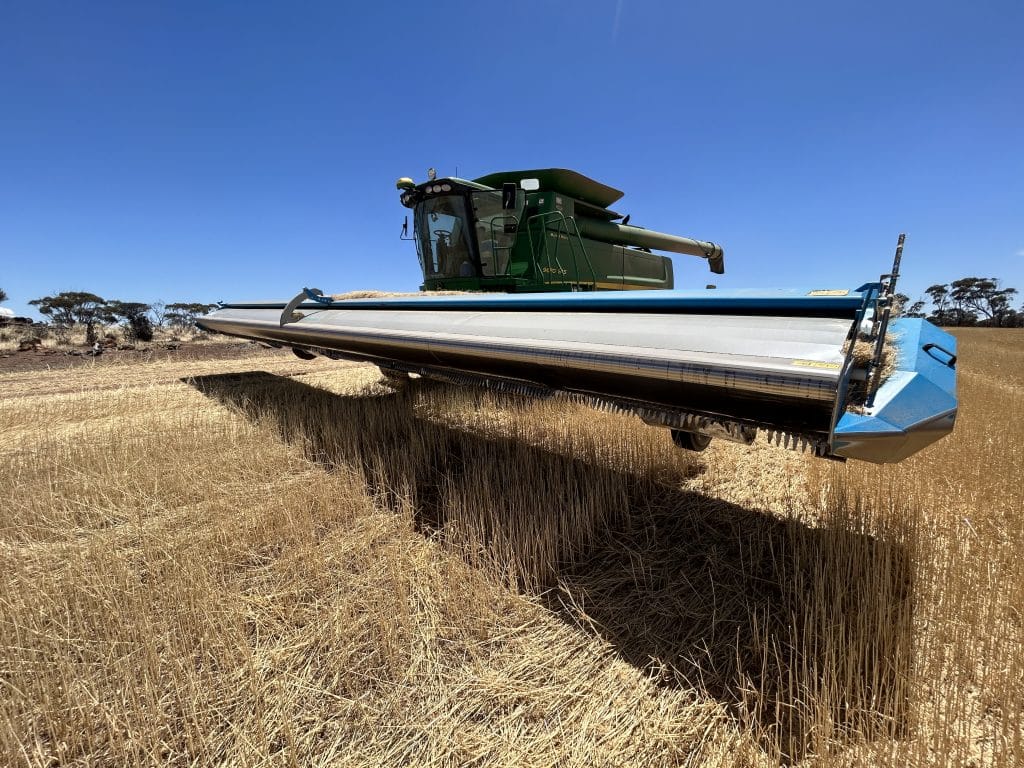
During our stay, we helped at three different locations, two sites with wheat and one site with barley. Additionally, one of the farmers had a platform header in the field, which allowed the team to do another round of testing on seed collection with the more conventional harvest setup.
While we do not have the hard data, field observations indicated that the results would be positive, with stripper headers collecting similar amounts of weed seeds as platform headers. The only concern seems to be in low-yielding crops. If the crop is low-yielding, the crop canopy is more open and ryegrass tillers have a more prostrate growth habit, which means they fall below the crop canopy and are missed by the stripper header. Typically, this would not be a problem with a platform header, as the low harvest height still brings in these lower seed heads. So, denser crop stands allow for better weed seed collection with stripper headers.

Australian Farmer Feedback
In addition to helping with the research, we met with four different farmers. Each one had a different perception of adopting HWSC and stripper headers. Three of the farmers we met with are experimenting with or using stripper fronts with their combines. In our conversations, the farmers mentioned that they were impressed with the speed at which they could harvest and the amount of fuel they were saving with them. Two farmers suspected they could harvest at twice the speed on roughly half the fuel compared to a conventional harvest with a platform header. However, one farmer does not use stripper fronts on their operation because they believe that they do not provide ample weed seed collection for HWSC.
Three of the farmers have been long-term users of HWSC, with some of them using it in one form or another for over two decades. All three farmers, though, have currently settled on using seed impact mills as their preferred method of HWSC, because they evenly spread the harvest residue and kill seeds in a one-pass system. These two factors convinced the farmers to adopt them over other popular methods of HWSC, such as chaff carts, chaff lining, and narrow windrow burning. Two farmers mentioned that they are skeptical about weed seed collection by stripper headers. Their skepticism has resulted in two approaches, with one choosing to adopt HWSC but not stripper headers, while the other has adopted stripper headers but not HWSC.
At the end of the day, the current status of harvest weed seed control in Australia shows promise for the longevity of this practice. It also provides a road map for American farmers who are interested in adopting these practices.
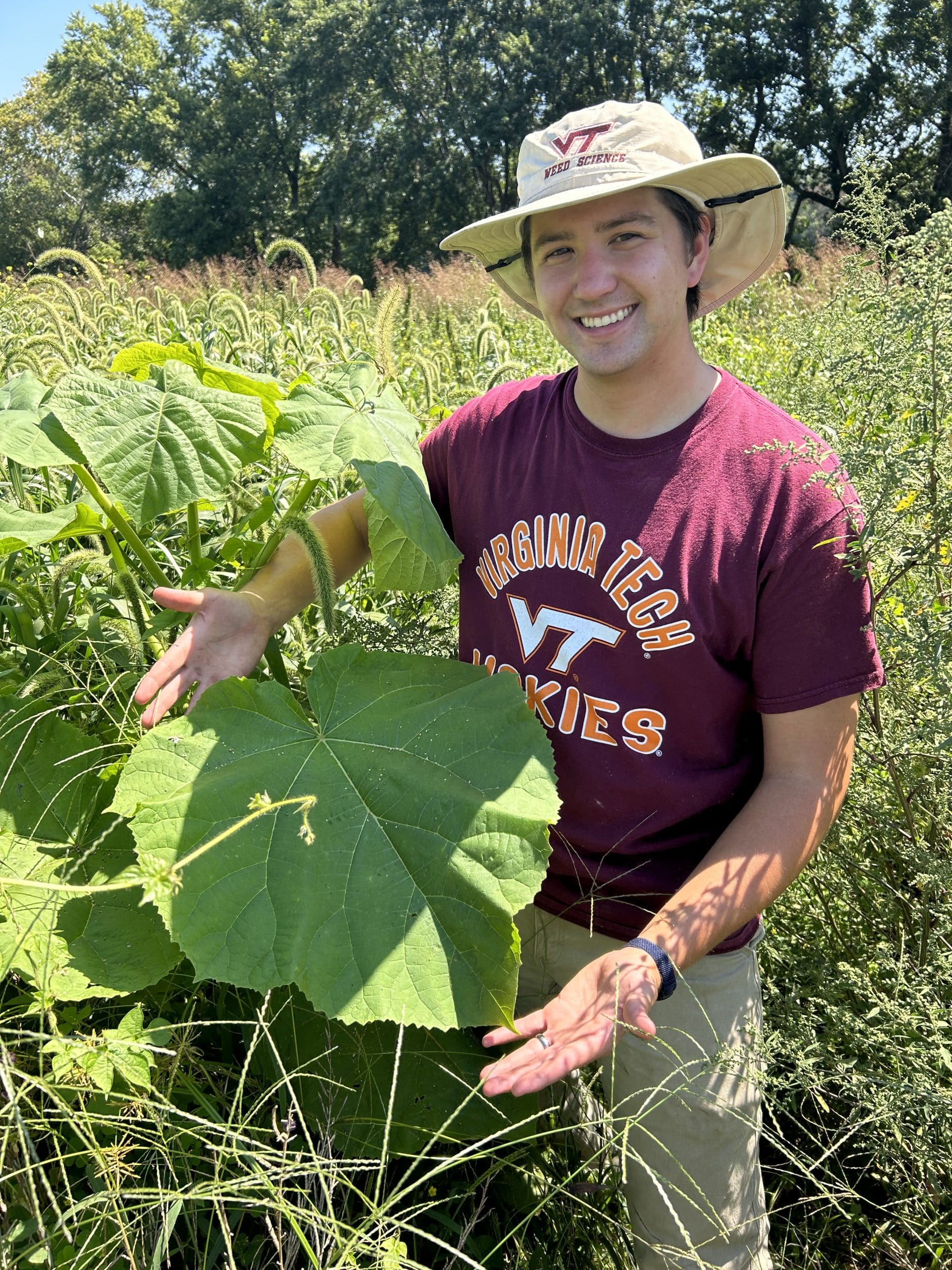
Article by Eli Russell, Virginia Tech
